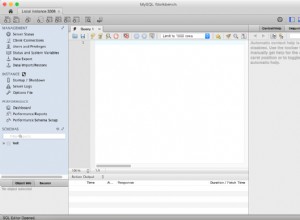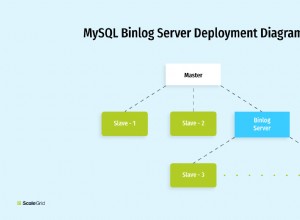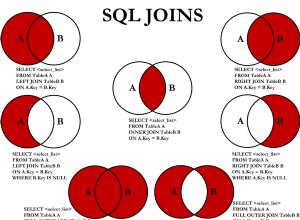Kiedy się rozglądam, znalazłem operator LIKE w LINQ które były kilkoma dobrymi przykładami tego, jak można to zrobić. Przetestowałem ten poniżej, który pochodzi z powyższego linku
Oto rozszerzenie do używania Like z lambdą opublikowane przez adobrzyca
public static class LinqEx
{
private static readonly MethodInfo ContainsMethod = typeof(string).GetMethod("Contains");
private static readonly MethodInfo StartsWithMethod = typeof(string).GetMethod("StartsWith", new[] { typeof(string) });
private static readonly MethodInfo EndsWithMethod = typeof(string).GetMethod("EndsWith", new[] { typeof(string) });
public static Expression<Func<TSource, bool>> LikeExpression<TSource, TMember>(Expression<Func<TSource, TMember>> property, string value)
{
var param = Expression.Parameter(typeof(TSource), "t");
var propertyInfo = GetPropertyInfo(property);
var member = Expression.Property(param, propertyInfo.Name);
var startWith = value.StartsWith("%");
var endsWith = value.EndsWith("%");
if (startWith)
value = value.Remove(0, 1);
if (endsWith)
value = value.Remove(value.Length - 1, 1);
var constant = Expression.Constant(value);
Expression exp;
if (endsWith && startWith)
{
exp = Expression.Call(member, ContainsMethod, constant);
}
else if (startWith)
{
exp = Expression.Call(member, EndsWithMethod, constant);
}
else if (endsWith)
{
exp = Expression.Call(member, StartsWithMethod, constant);
}
else
{
exp = Expression.Equal(member, constant);
}
return Expression.Lambda<Func<TSource, bool>>(exp, param);
}
public static IQueryable<TSource> Like<TSource, TMember>(this IQueryable<TSource> source, Expression<Func<TSource, TMember>> parameter, string value)
{
return source.Where(LikeExpression(parameter, value));
}
private static PropertyInfo GetPropertyInfo(Expression expression)
{
var lambda = expression as LambdaExpression;
if (lambda == null)
throw new ArgumentNullException("expression");
MemberExpression memberExpr = null;
switch (lambda.Body.NodeType)
{
case ExpressionType.Convert:
memberExpr = ((UnaryExpression)lambda.Body).Operand as MemberExpression;
break;
case ExpressionType.MemberAccess:
memberExpr = lambda.Body as MemberExpression;
break;
}
if (memberExpr == null)
throw new InvalidOperationException("Specified expression is invalid. Unable to determine property info from expression.");
var output = memberExpr.Member as PropertyInfo;
if (output == null)
throw new InvalidOperationException("Specified expression is invalid. Unable to determine property info from expression.");
return output;
}
}
Aby z niego skorzystać, wystarczy dodać funkcję Like, w której umieścisz funkcje Zawiera. Poniżej możesz zobaczyć przykład
using (CustomerEntities customerContext = new CustomerEntities())
{
IQueryable<Customer> customer = customerContext.Customer.Like(x => x.psn, "%1%");
}
Spowoduje to utworzenie zapytania sql, które wygląda mniej więcej tak.
SELECT
[Extent1].[psn] AS [psn]
FROM [dbo].[Customer] AS [Extent1]
WHERE [Extent1].[psn] LIKE '%1%'




